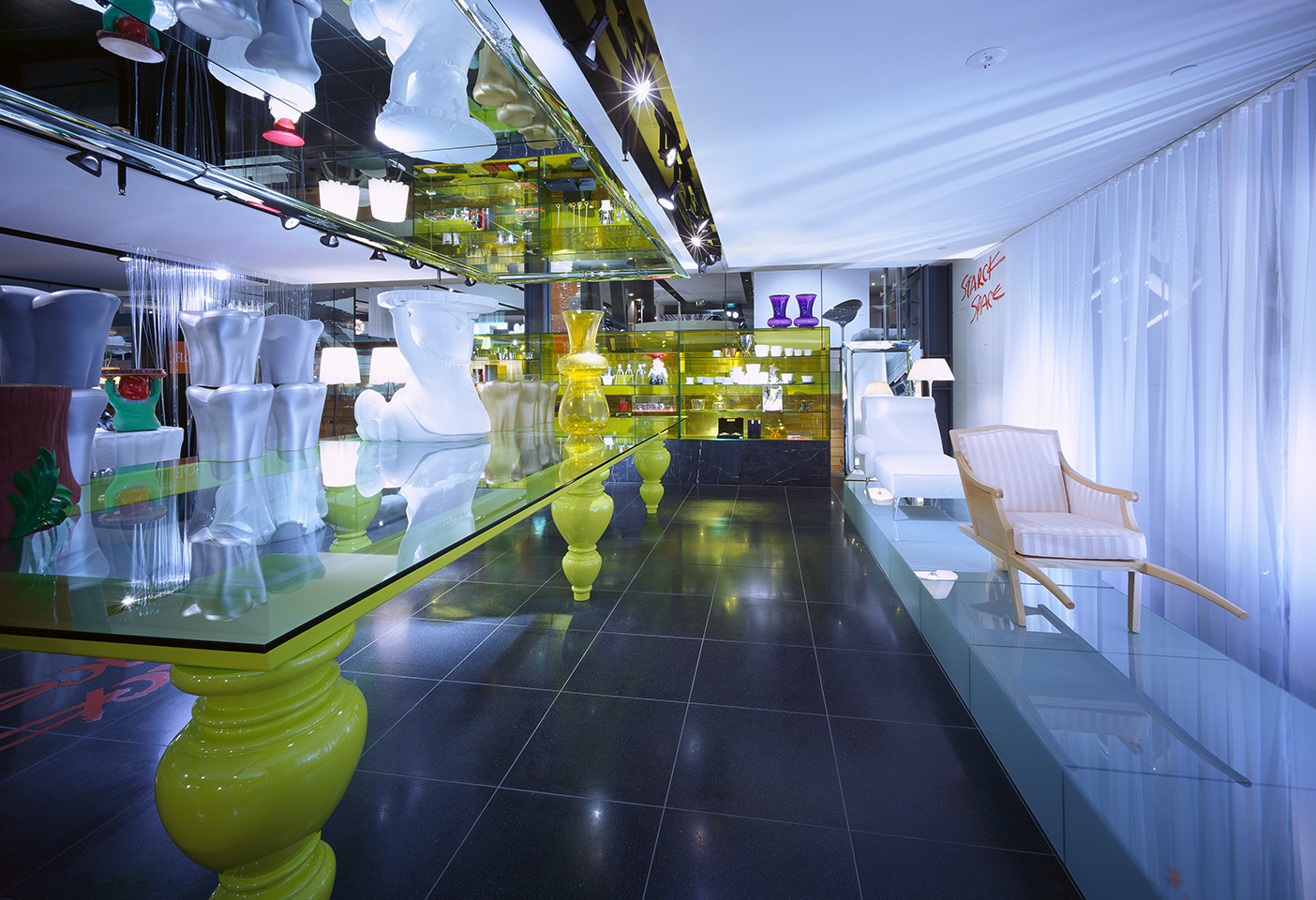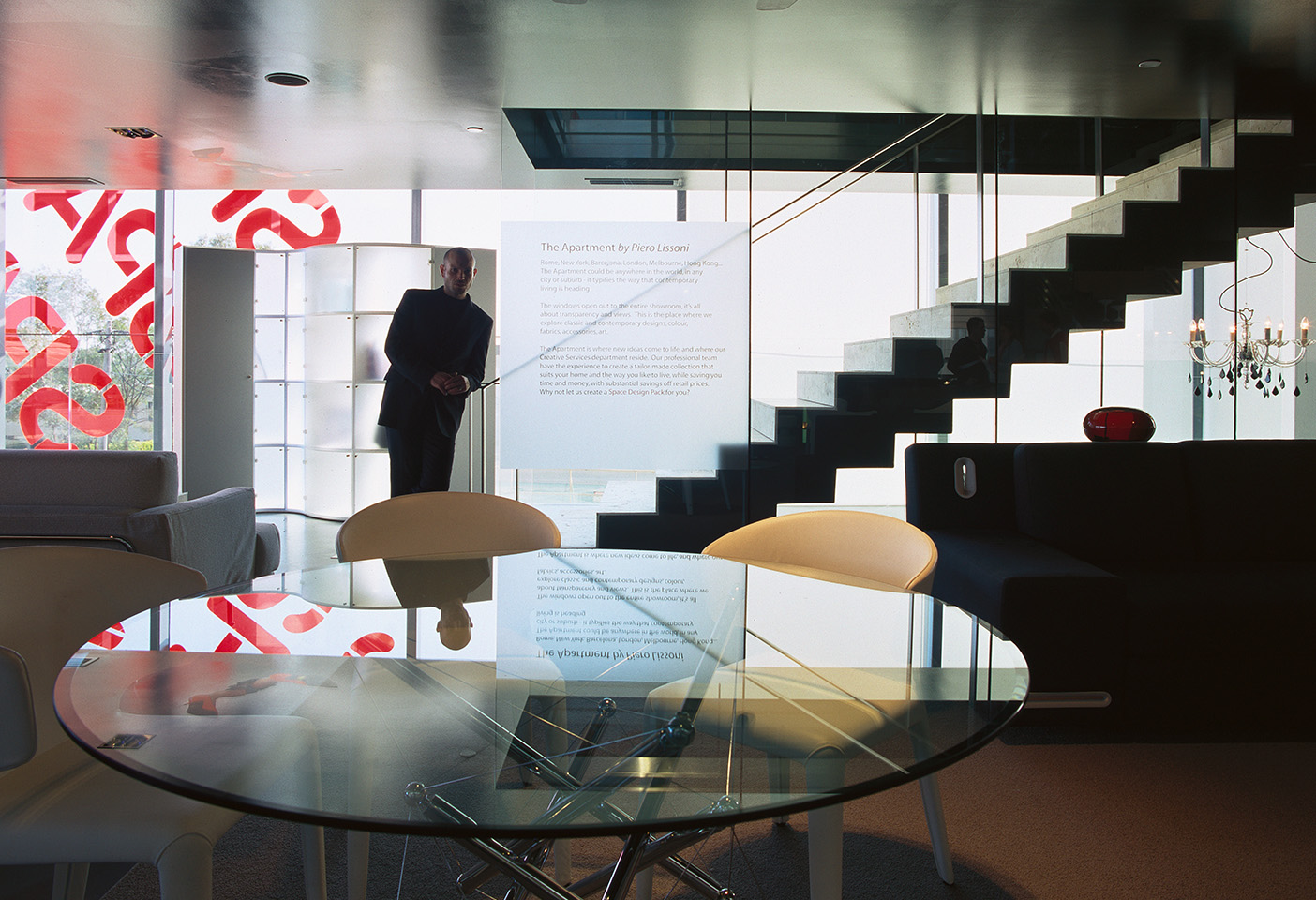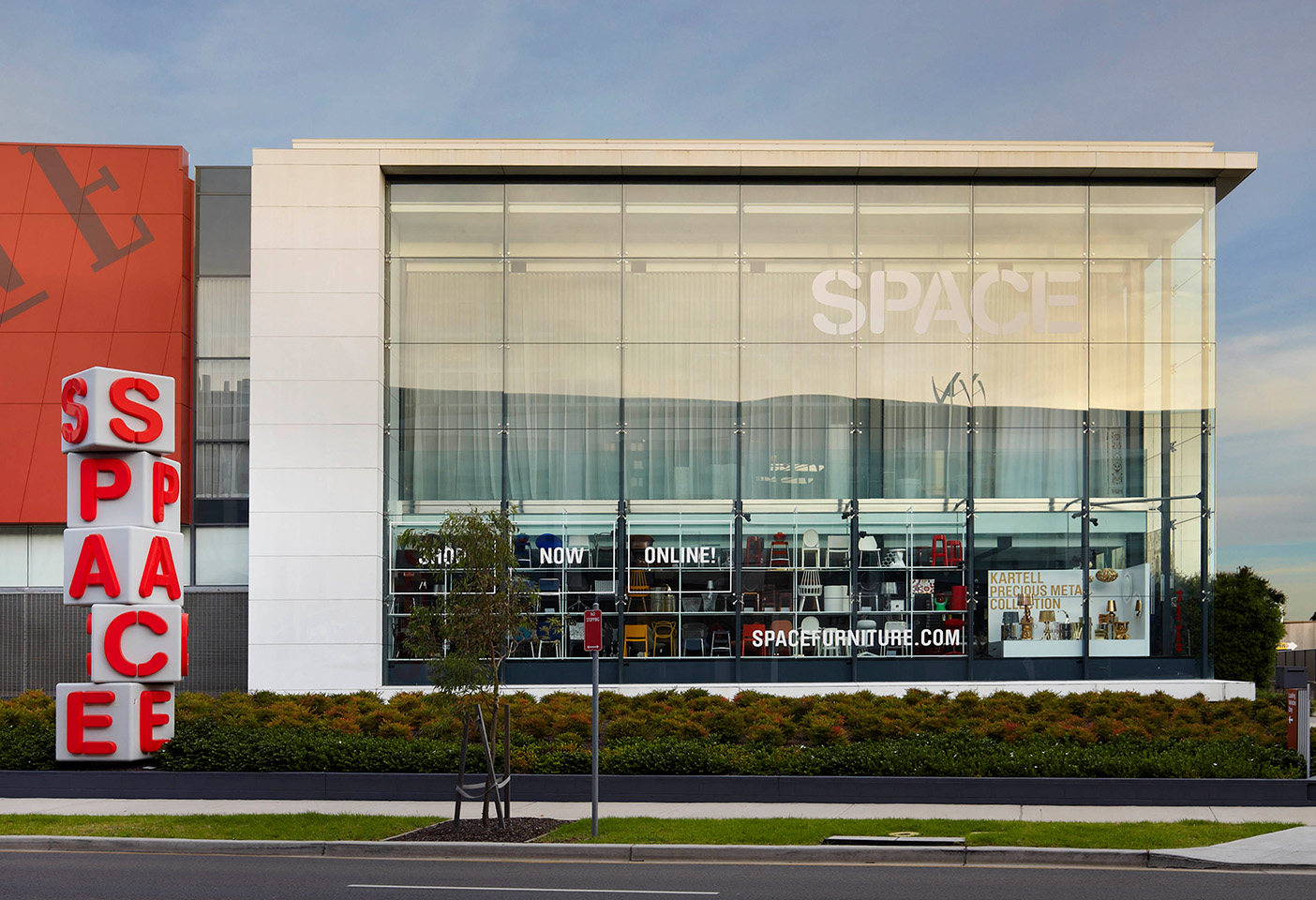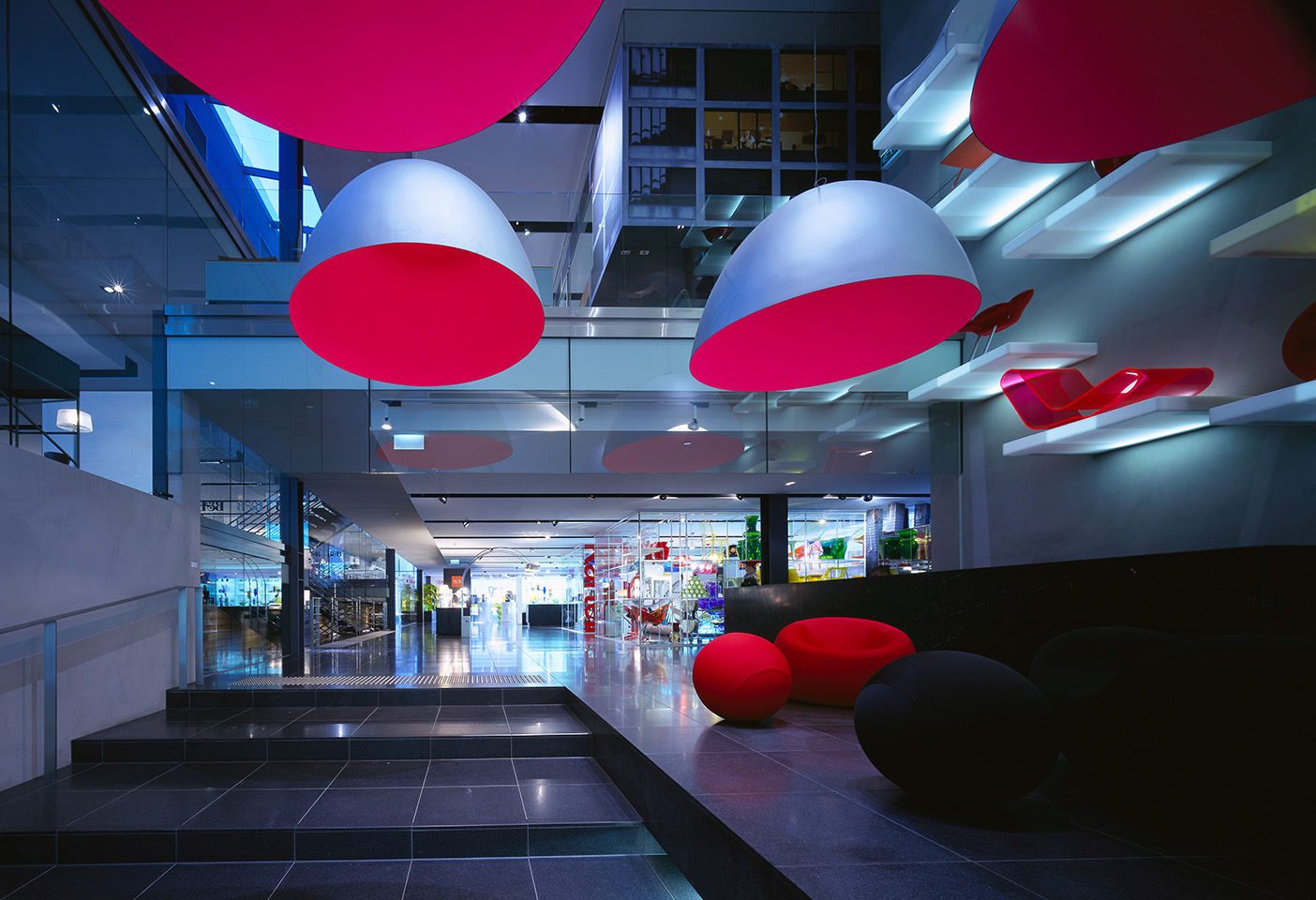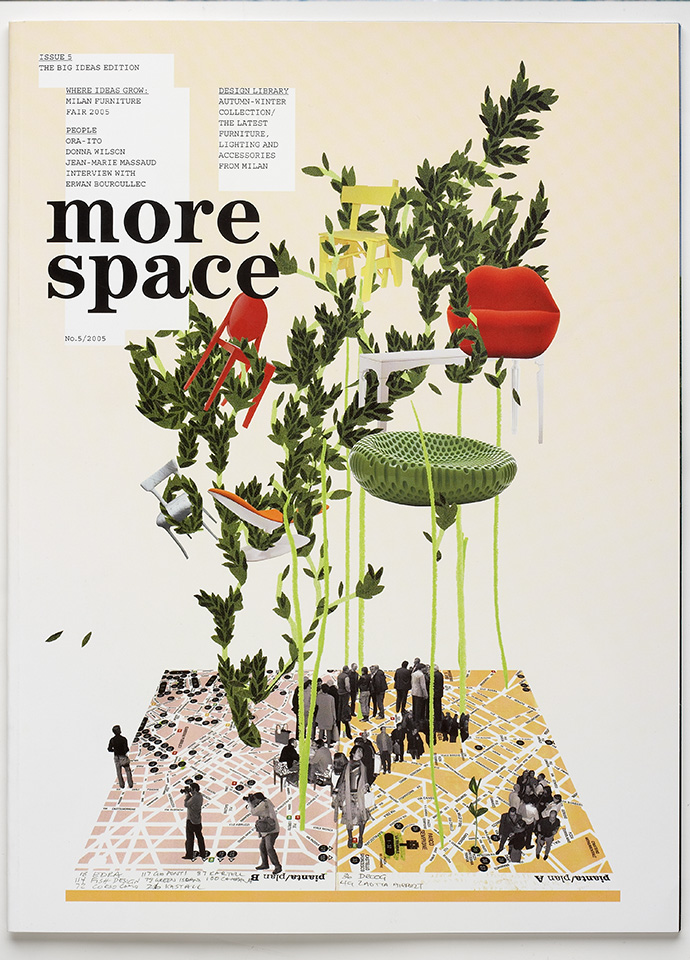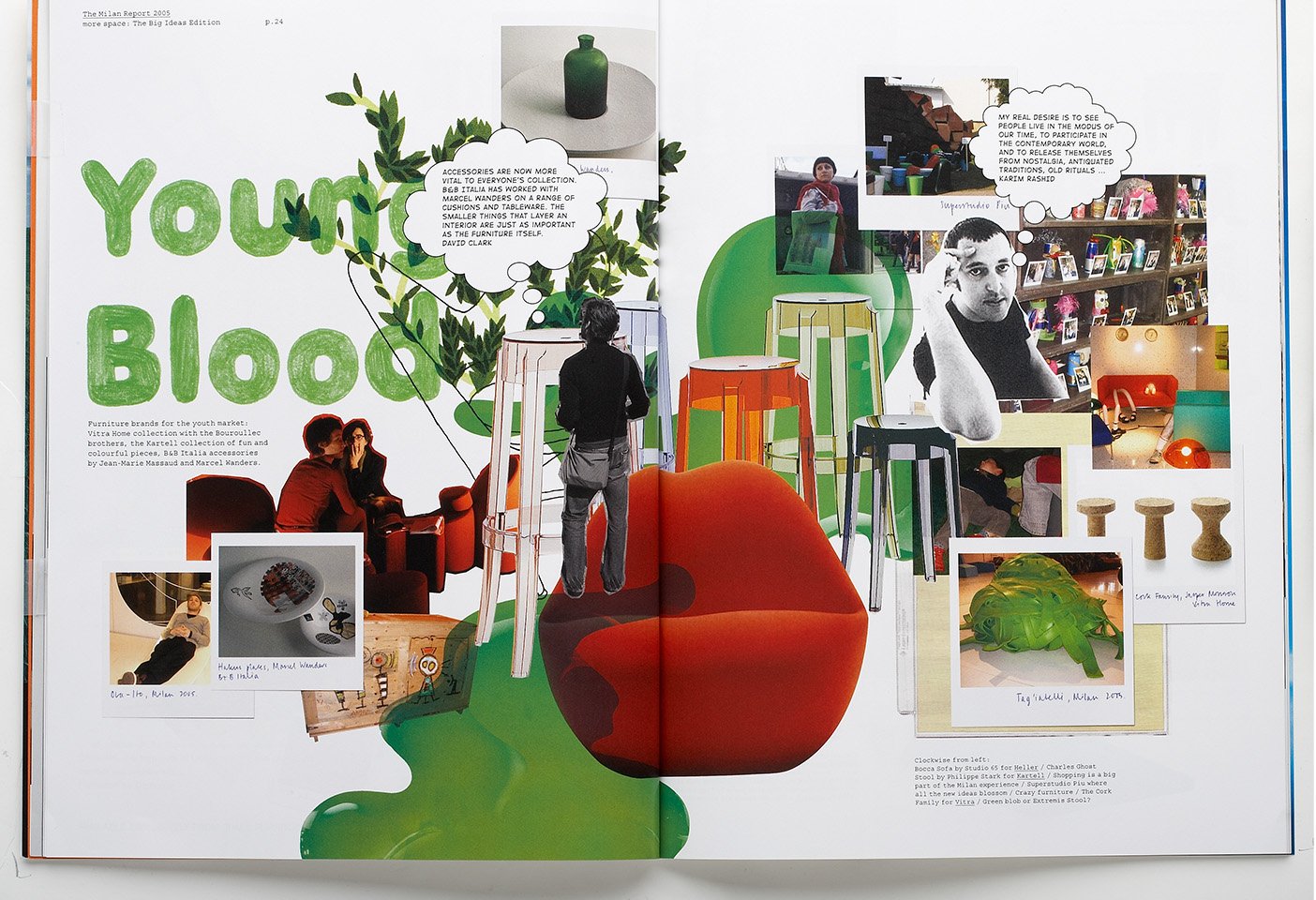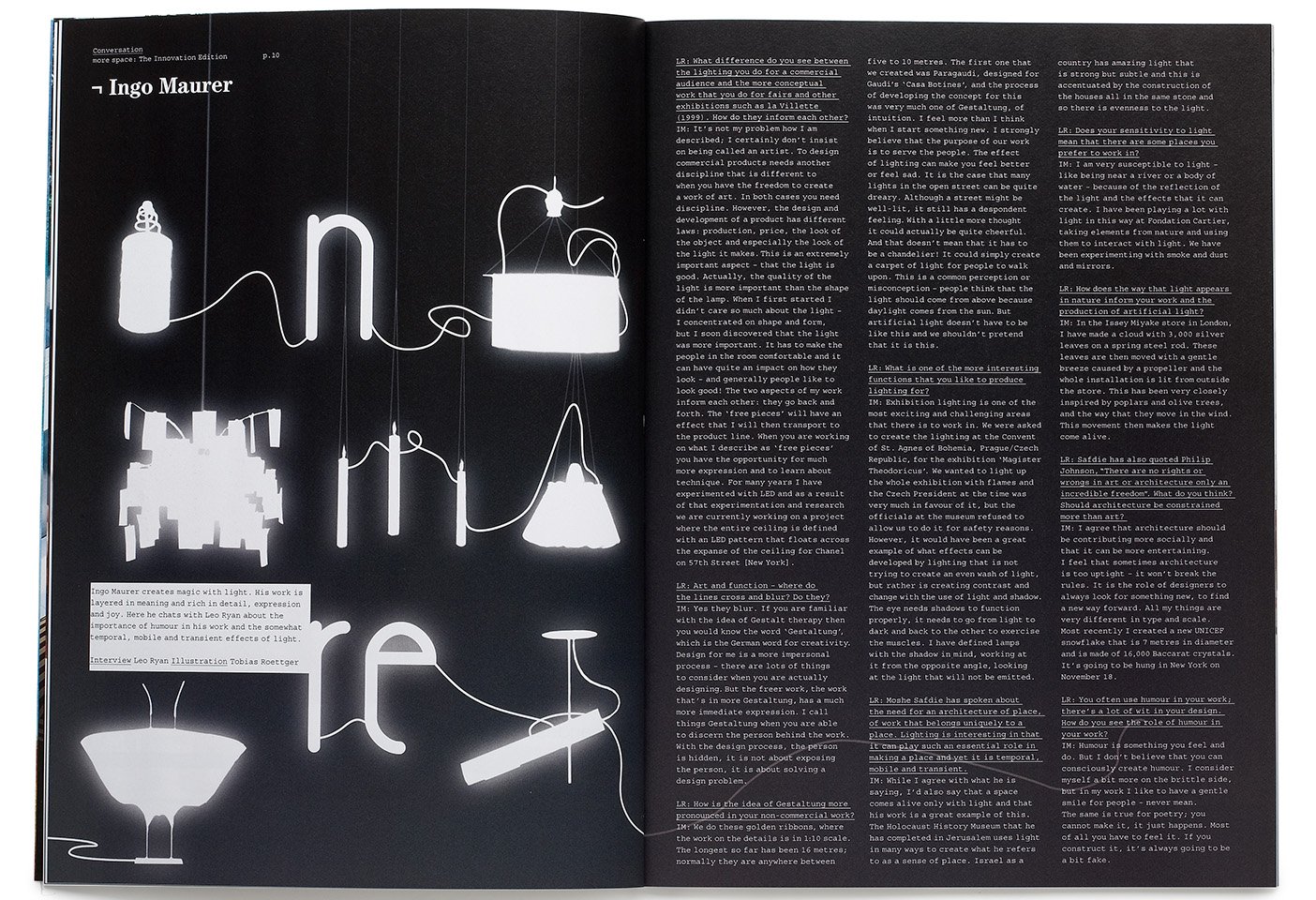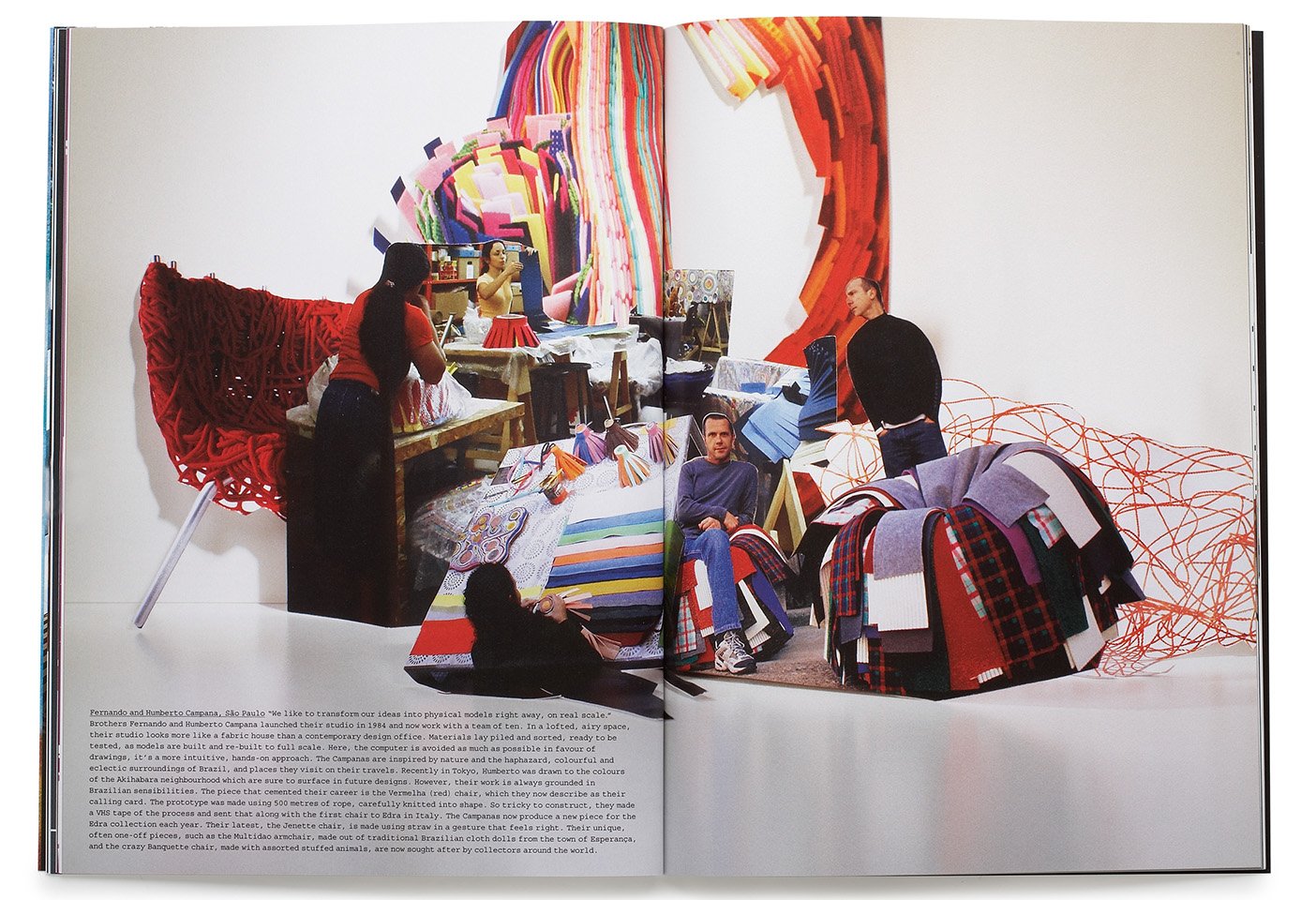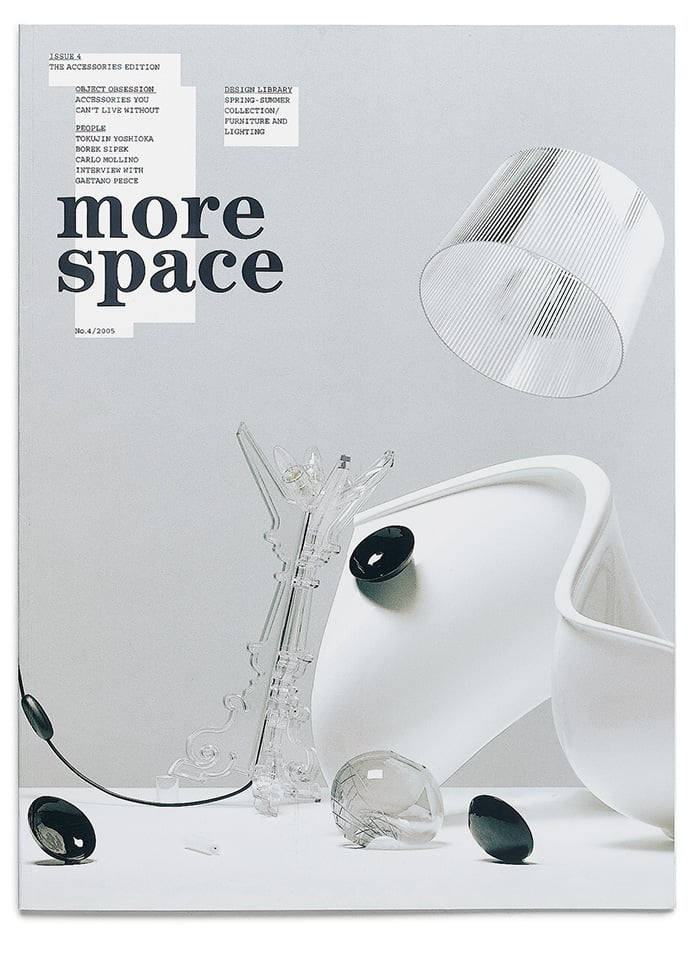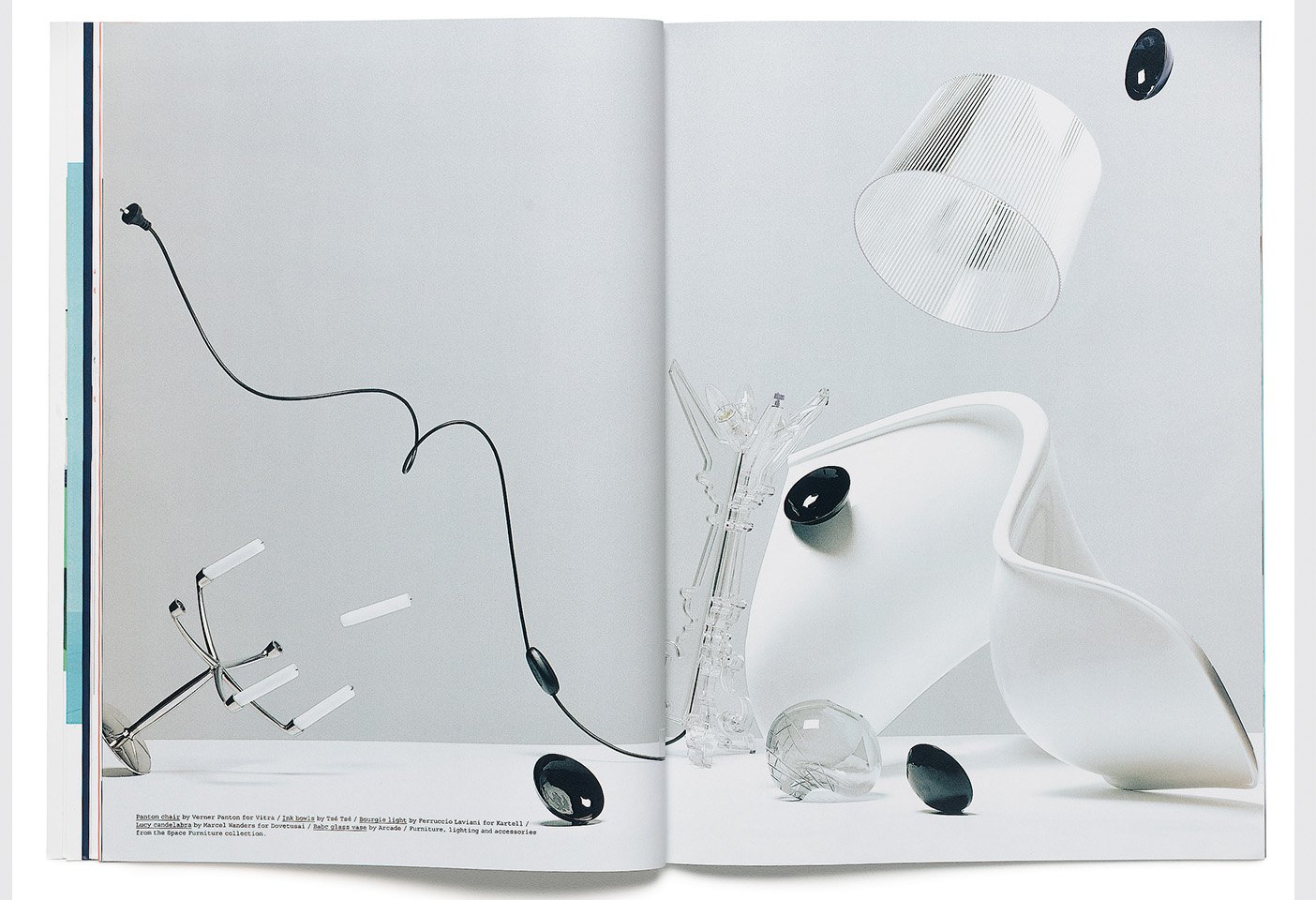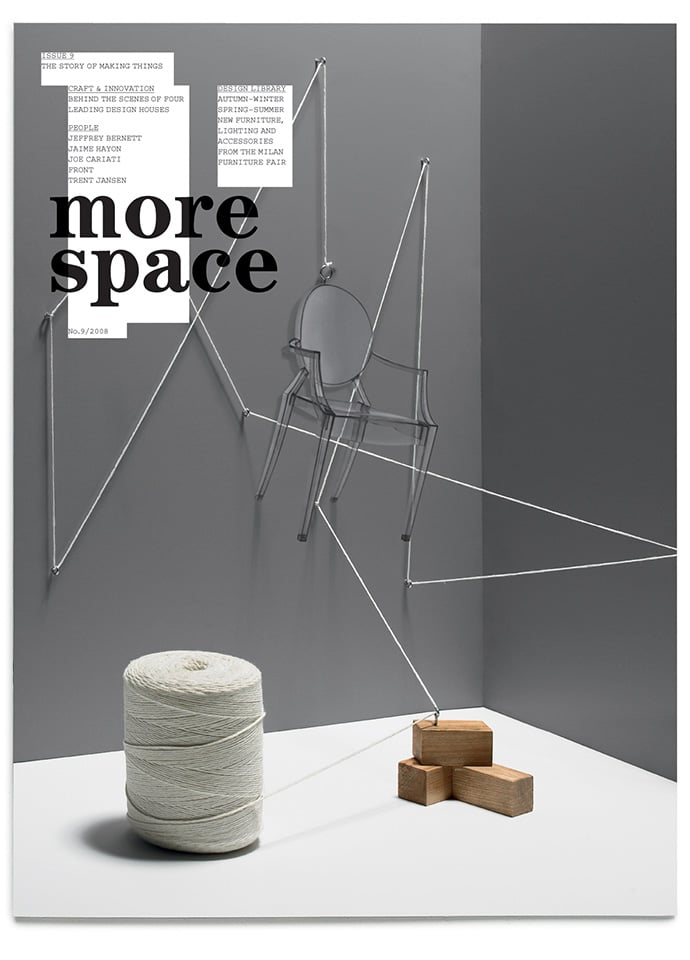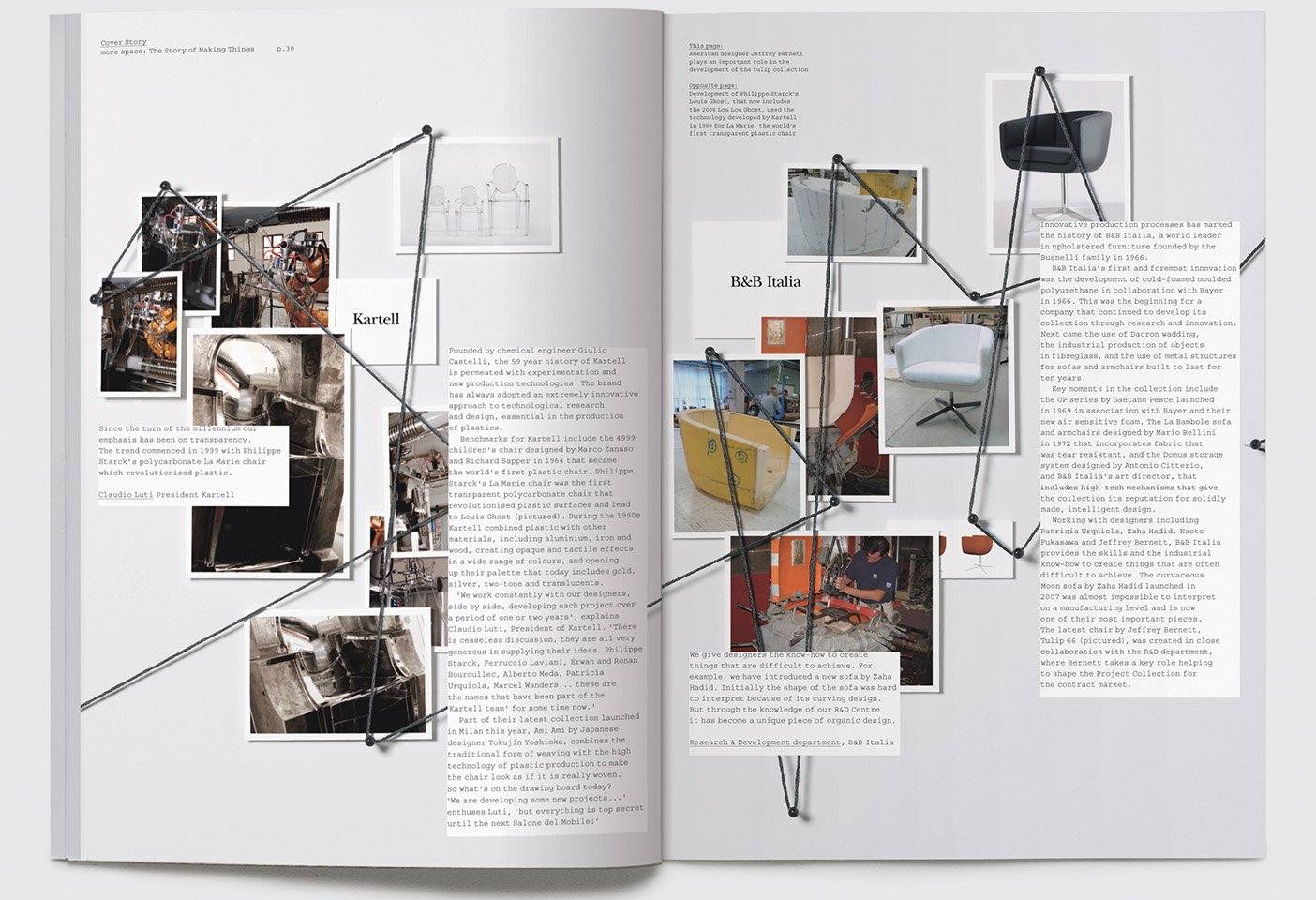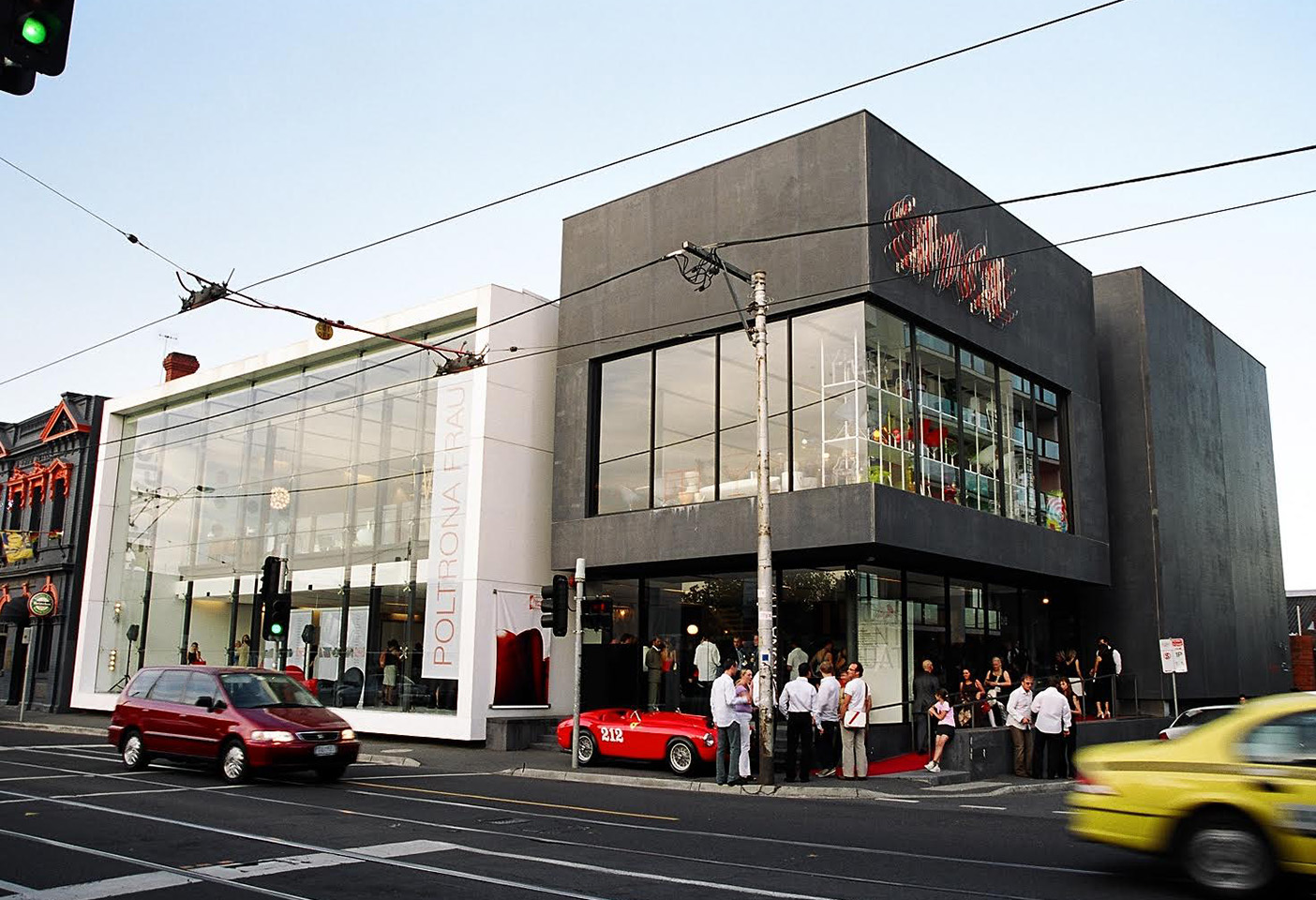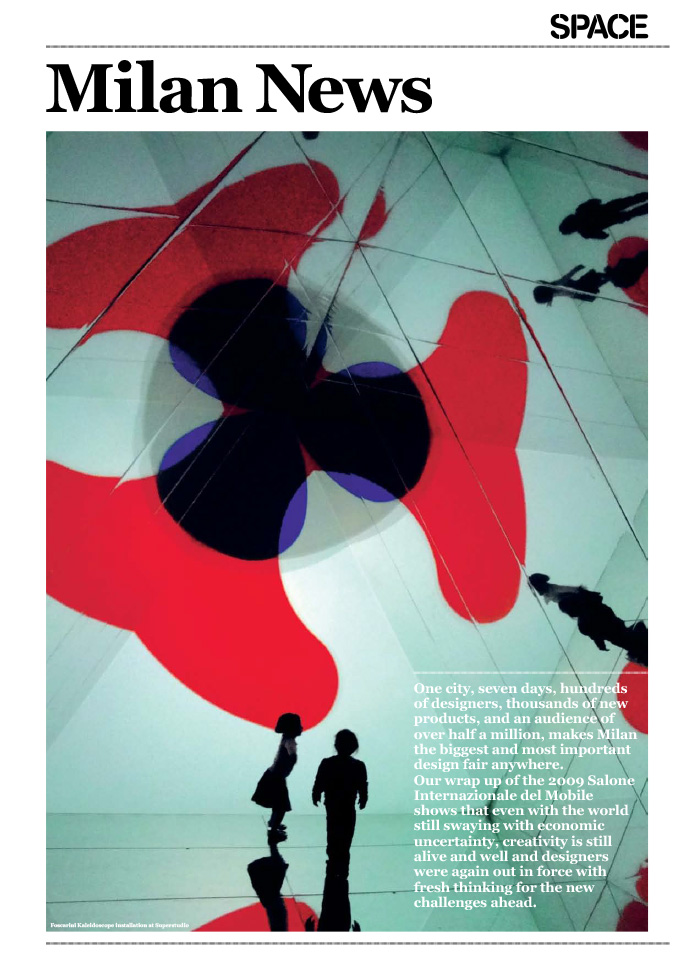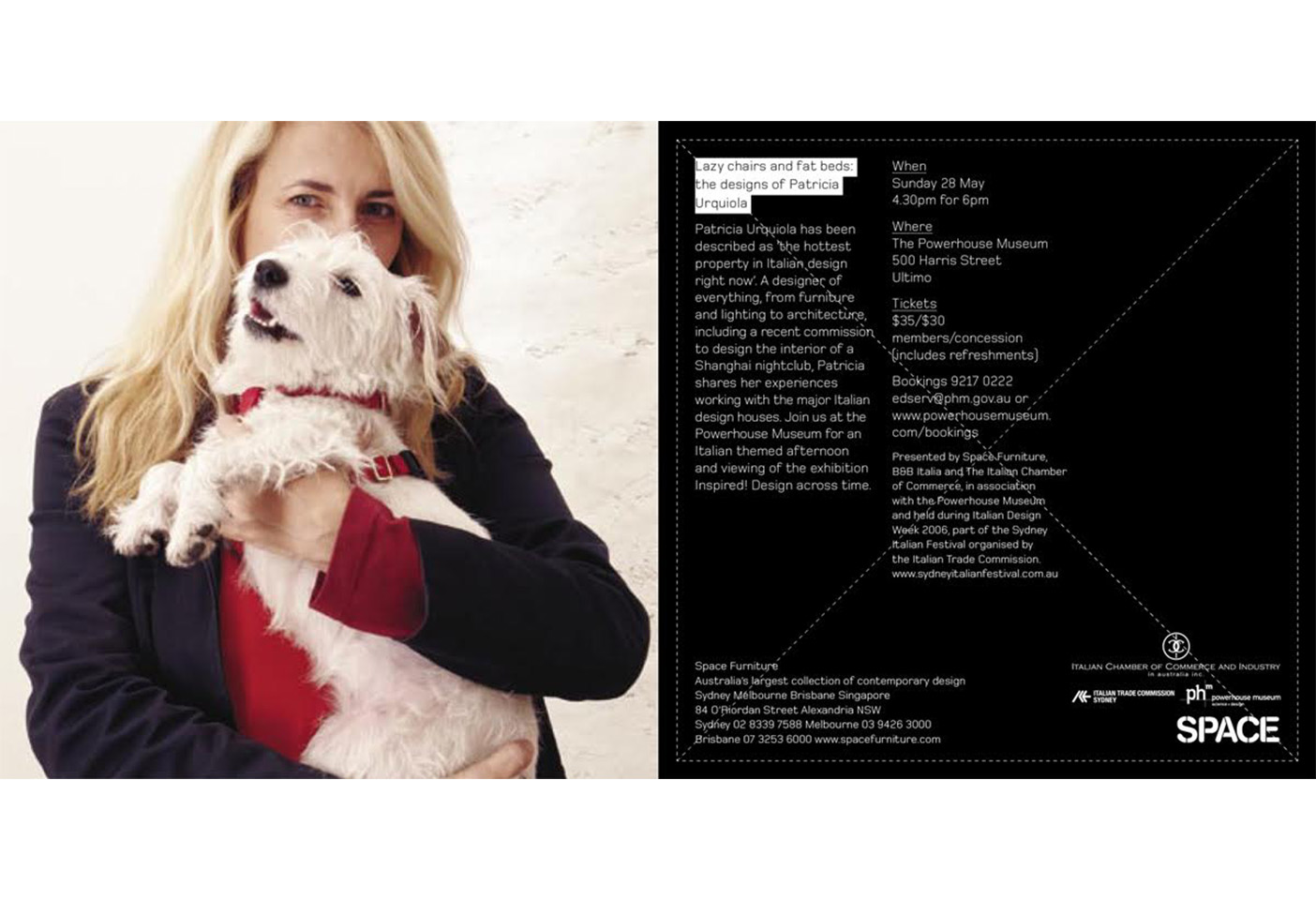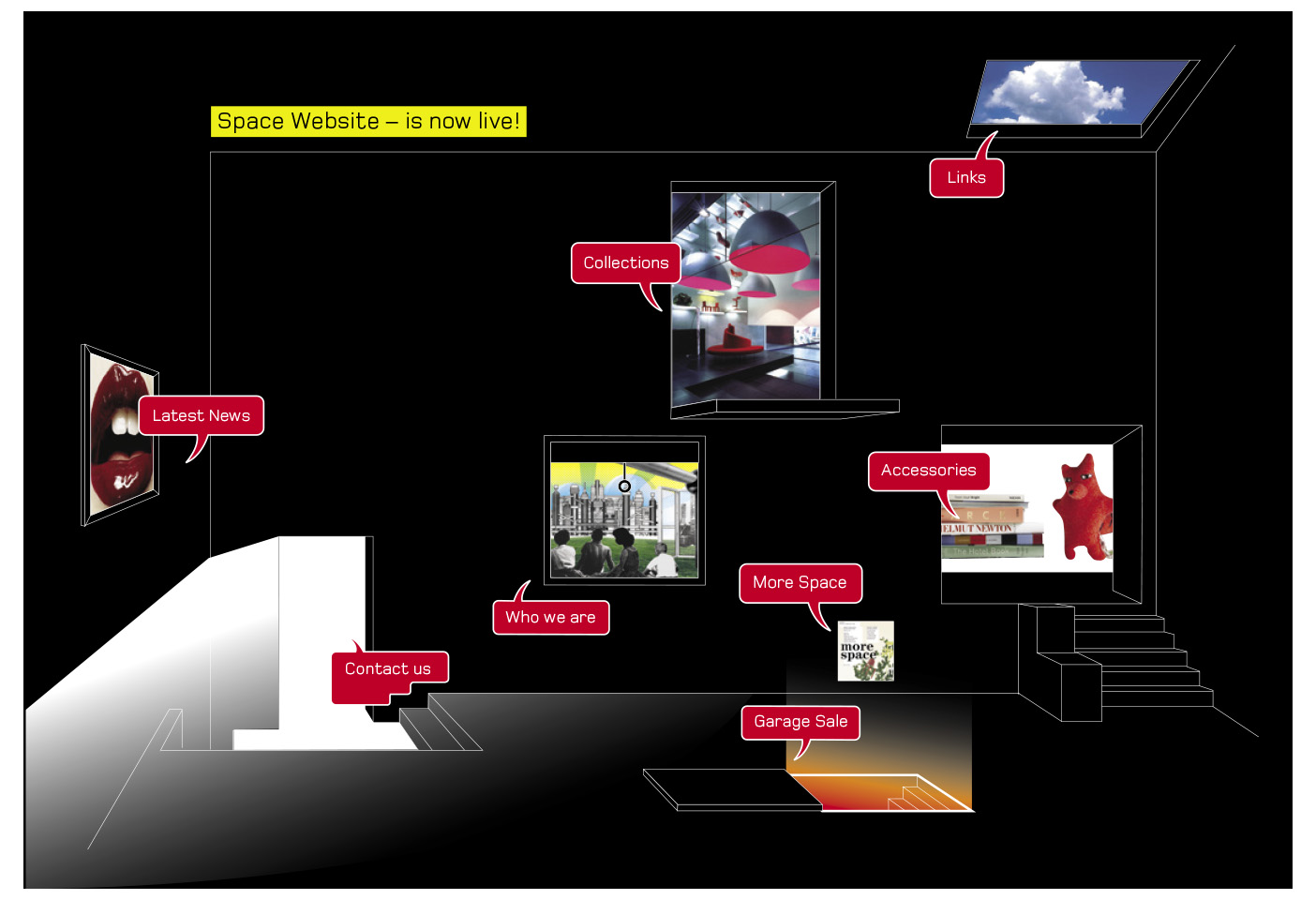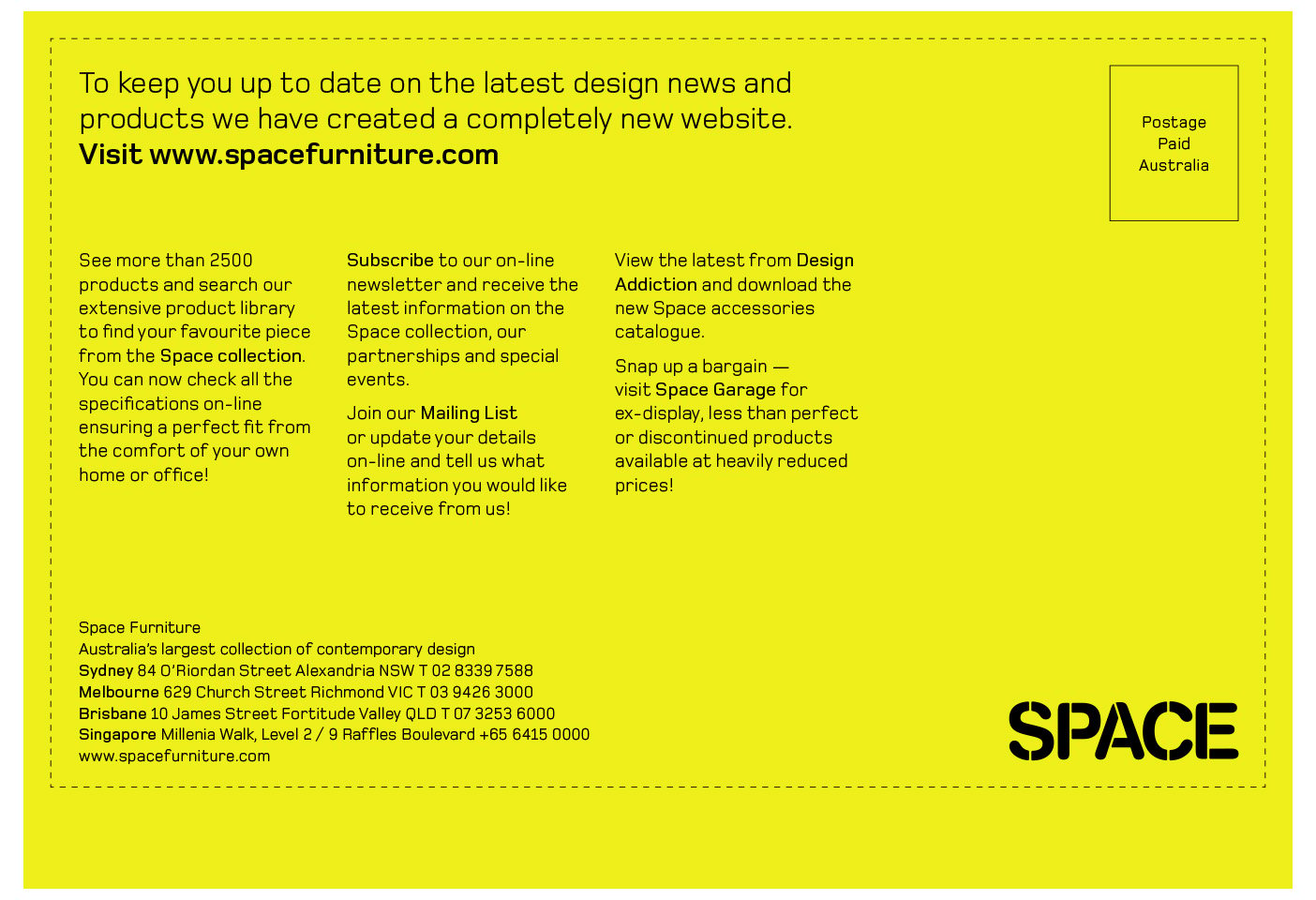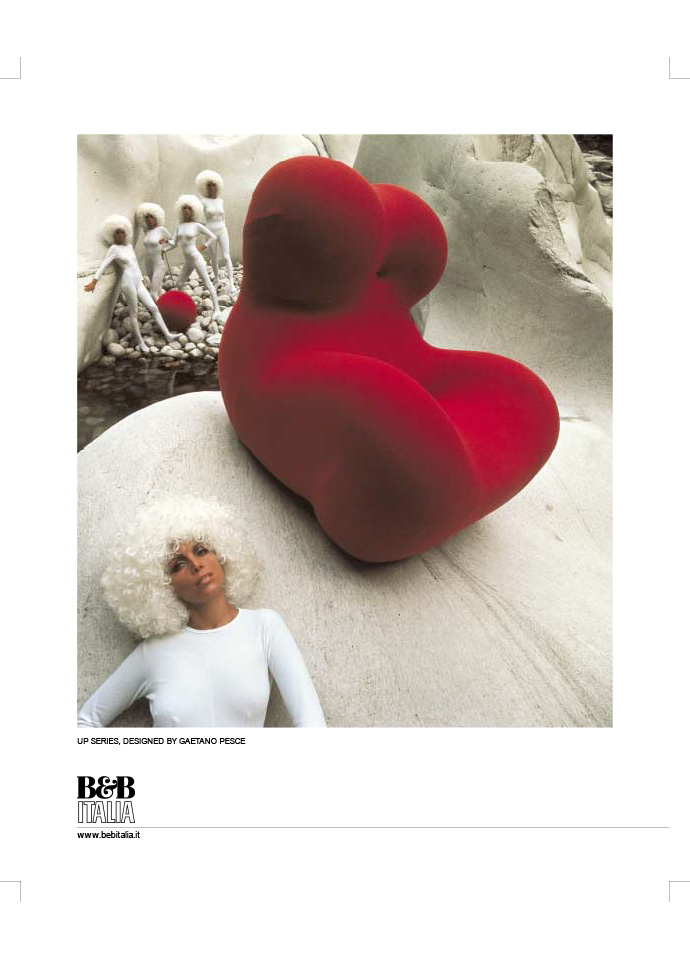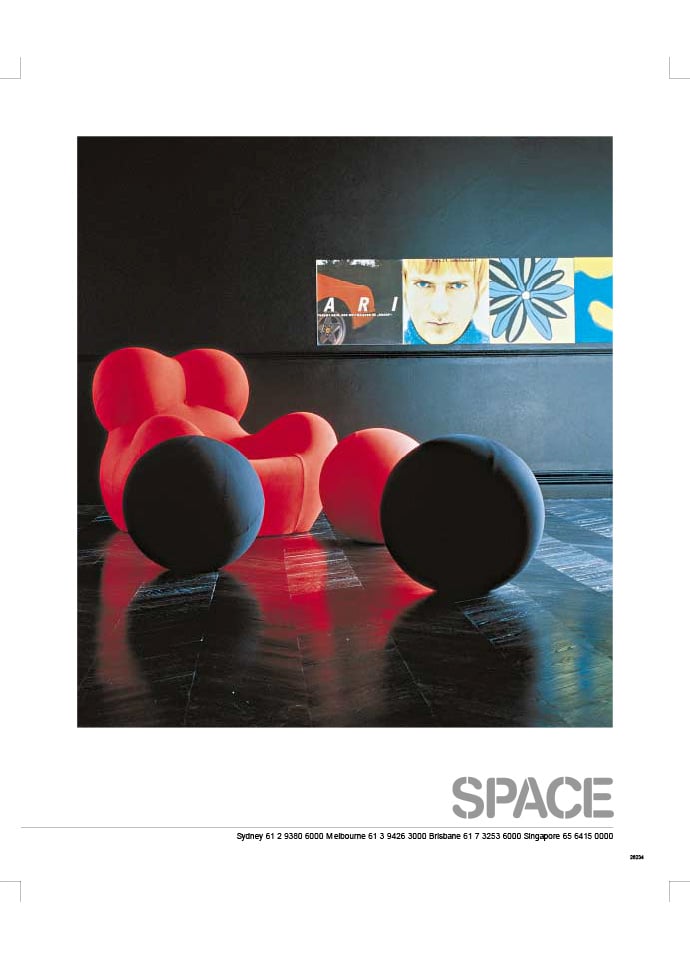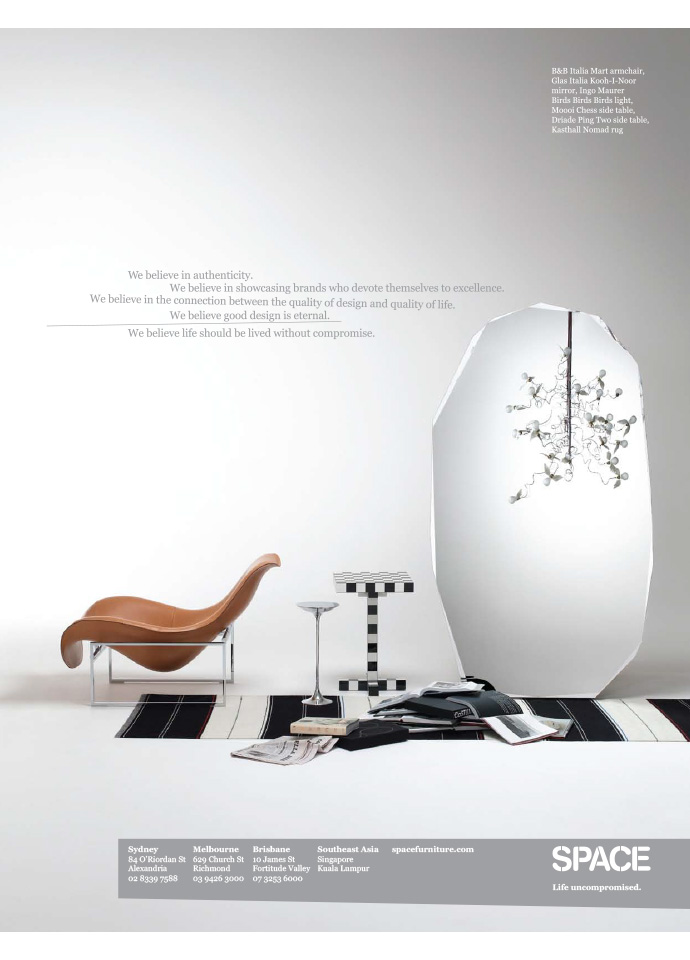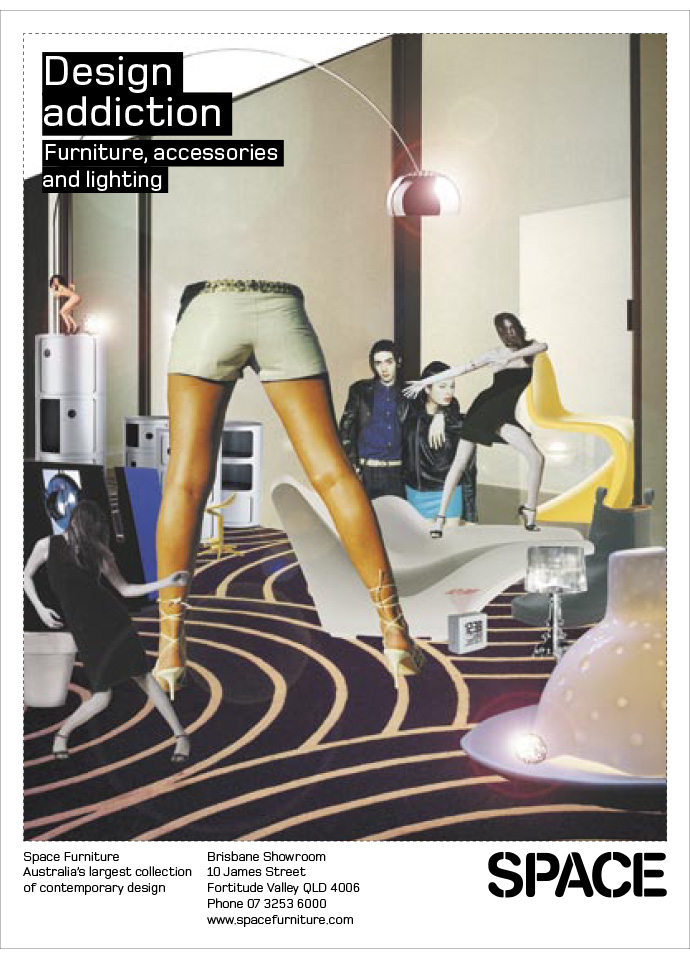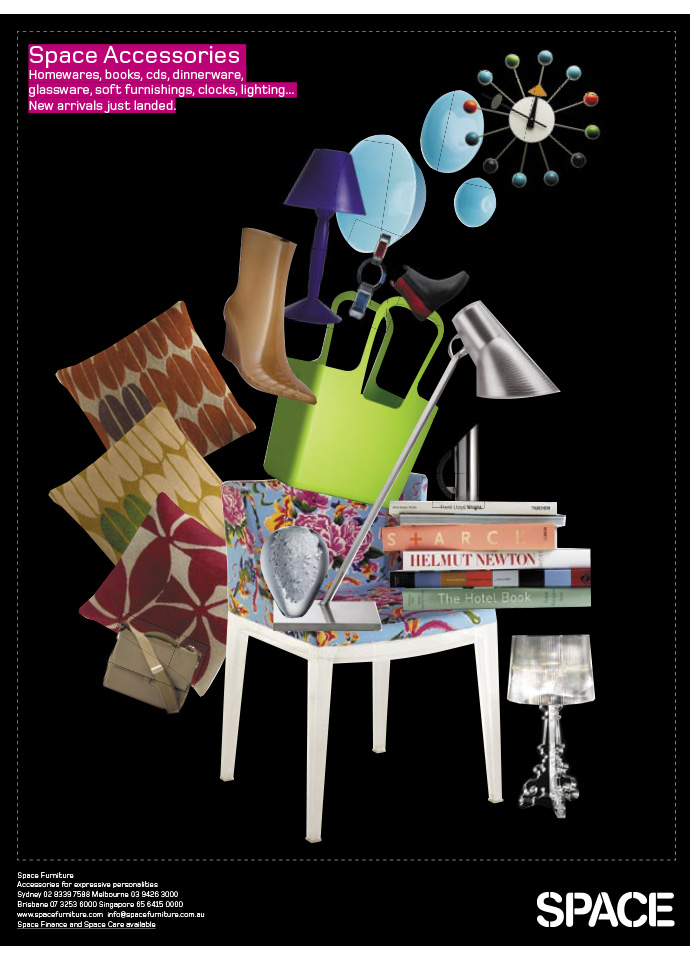
To help celebrate Space’s 30th birthday, More Space is taking a design ride back to the early days in a three-part editorial series. From the launch of Space’s architecturally designed showrooms in Sydney and Melbourne in 1993, to the bold Space identity and caché of campaigns, as well as our very own More Space magazine designed by Studio Ongarato and launched with Vogue Living in 2003. The design festivals, installations and international design guests, the architects, designers and clients who have embraced design icons for their projects and homes. Over the next month, we explore Space’s design journey across South East Asia, and talk to some of the people instrumental in shaping who Space is today.
Flash back to 1993 as Space’s founder Kevin Jarrett launched the design retailers first two showrooms in Sydney and Melbourne and introduced some of the world’s most collectable design pieces and brands to Australia. It was a time when architects were shifting gear from the macro to the micro, continuing in the vein of the 1960s when independent architects and design studios gained international status for their designs across furniture, lighting and objects hand in hand with Italian manufacturers. By the 90s, collaborations were blossoming between B&B Italia and Antonio Citterio; Kartell, Philippe Starck and Ron Arad; and Living Divani and Piero Lissoni, who were producing everything from hotels to homes, sofas to lighting, and lemon squeezers to tooth brushes. In the case of Citterio and Lissoni, they would rise to the level of art directors as well focused on design-led manufacturing and carefully curated collections. As Jarrett remarked to the press at the time, ‘Design is not about fads, good design does not date. We don’t sell fashion, we sell furniture… There is an expectation of quality and longevity that is a result of the design process. The people who make our pieces invent the technology.'

The Space Furniture Sydney flagship, here and following, designed by Woods Bagot and launched in 2004. Here the entry featured six huge Ingo Maurer XXL Domes, Gaetano Pesce's UP Series and a soaring wall of iconic chairs. Photo c/o Space.
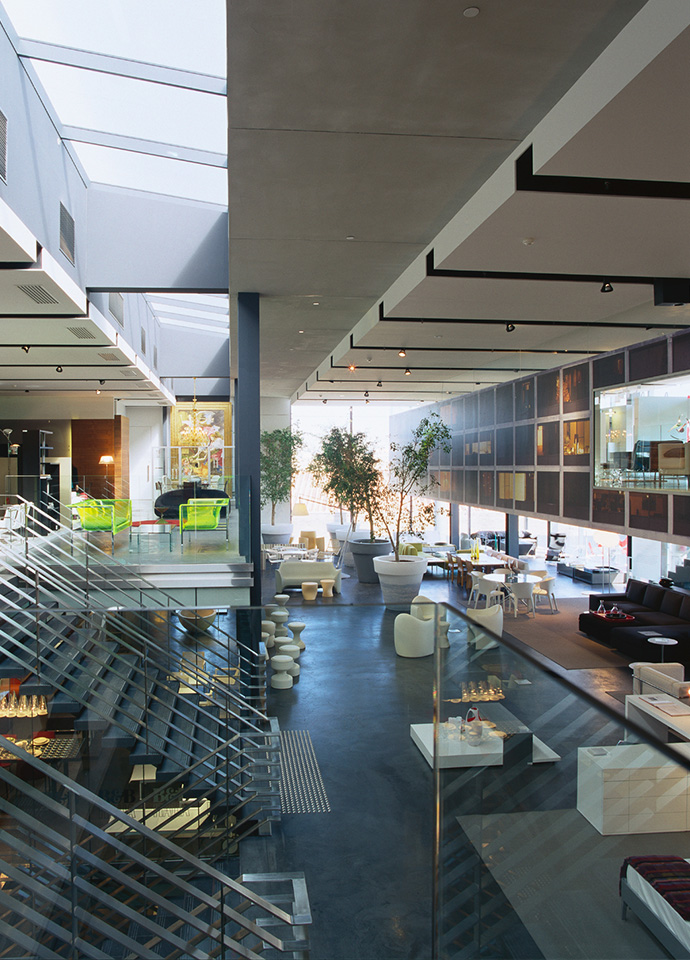
Huge volumes and split-level spaces provide a birds-eye view across the levels up to The Apartment, a space where clients could have a more intimate experience of the collection. Photo c/o Space
That symbiotic design approach by Italian manufacturers would permeate the methodology for Space too, most visibly in the design of its flagship showrooms in Sydney and Melbourne. Those first purpose-built destinations for design would set the direction for all Space showrooms to follow, in Brisbane, Singapore and Kuala Lumpur. With the aim of embracing the highest level of design detail across all aspects of the business, Space would engage Wood Bagot to shape interiors to represent not only the collection of furniture, lighting and accessories brands, but the deeper experience of living with the world’s best furniture. The brief would call for immersive and layered interiors, where the history of each brand and the iconic pieces in the collections produced living, kitchen and dining spaces, rooms that brought together designs to inspire and let you dream, all connected to the latest new releases from Milan. A fundamental aspect of this approach was to share the back stories behind each chair, light and object: its history, the designer, the materials and how it was made, and the provenance, and, in many cases, its iconic status and significance in design history. Today, those stories are interwoven with the rich layers of the Space journey too.
In step with the innovation of the designers and manufacturers, and the experiential approach to the new Space showrooms, Space's new identity mirrored the depth of the collection and the passion, knowledge and experience of the people who are part of that story. Fabio Ongarato, cofounder of Studio Ongarato, who has been instrumental in putting form to that identity, remarks, ‘Our ambition with the Space brand was that we wanted more people to love design, not just the design educated and elite. To do that we shifted away from product obsession and moved towards emotional brand storytelling.'
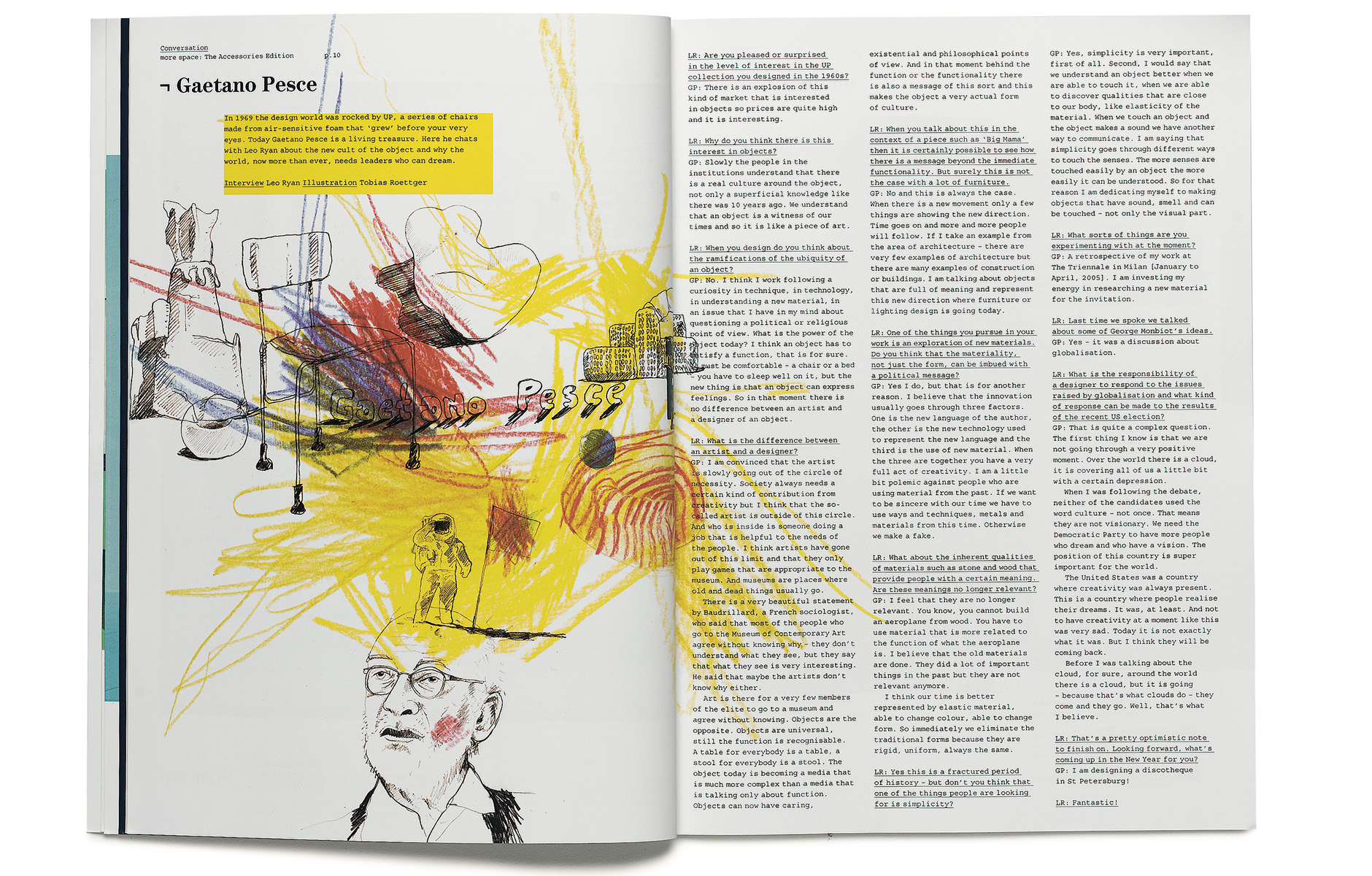
The More Space interviews, this one with Gaetano Pesce, featured evocative sketches by Berlin-based illustrator Tobias Roettger. Photo c/o Space.
‘Our ambition with the Space brand was that we wanted more people to love design, not just the design educated and elite. To do that we shifted away from product obsession and moved towards emotional brand storytelling.'
Fabio Ongarato, cofounder, Studio Ongarato
Like the adventurous collections that Space represents, the communications have embraced the cultural depth of design. Invitations, brand campaigns, product insights and design posters, they looked at ways to connect with the design industry and beyond. 'Anyone can love design,' remarks Ongarato. 'And they should because design is amazing. We love designer furniture, you could say we are all obsessed by it. But not just by how it looks, but by what it can do. It can completely change a space which means it can change how we live. The approach to the depiction of the Space brand is one of strength and conviction. It has a dynamic quality that is 'elastic' and captures the diversity of products, audience and multi-modal lifestyles.'
Fundamental to this has been More Space magazine, a publication about design, and the ideas embedded within it, creatively rendered by the team at Studio Ongarato. When Space launched More Space in 2003, the idea was to bring together a team with knowledge, humour and insights to reveal the often hidden stories behind the collections. Interviews, profiles, opinion pieces, news and features, Space had the network to go deep, with each issue featuring up close and personal conversations with the big names in design. From Philippe Starck and Patricia Urquiola, to Rolf Fehlbaum and Gaetano Pesce; or a look at the back stories of those who changed furniture forever, from Charlotte Perriand to Carlo Mollino; and photography shoots with leading designers and their favourite icons. As design industry maverick David Clark, editor-in-chief of Vogue Living at the time remarks: ’Space could provide depth because they had that depth. They were engaged in design internationally in a really direct way, and telling stories was already part of their raison dêtre. They occupied a position of authority and had access to people others couldn’t get to.'
’Space could provide depth because they had that depth. They were engaged in design internationally in a really direct way, and telling stories was already part of their raison dêtre. They occupied a position of authority and had access to people others couldn’t get to.'
David Clark, designer, design editor and former editor-in-chief of Vogue Living
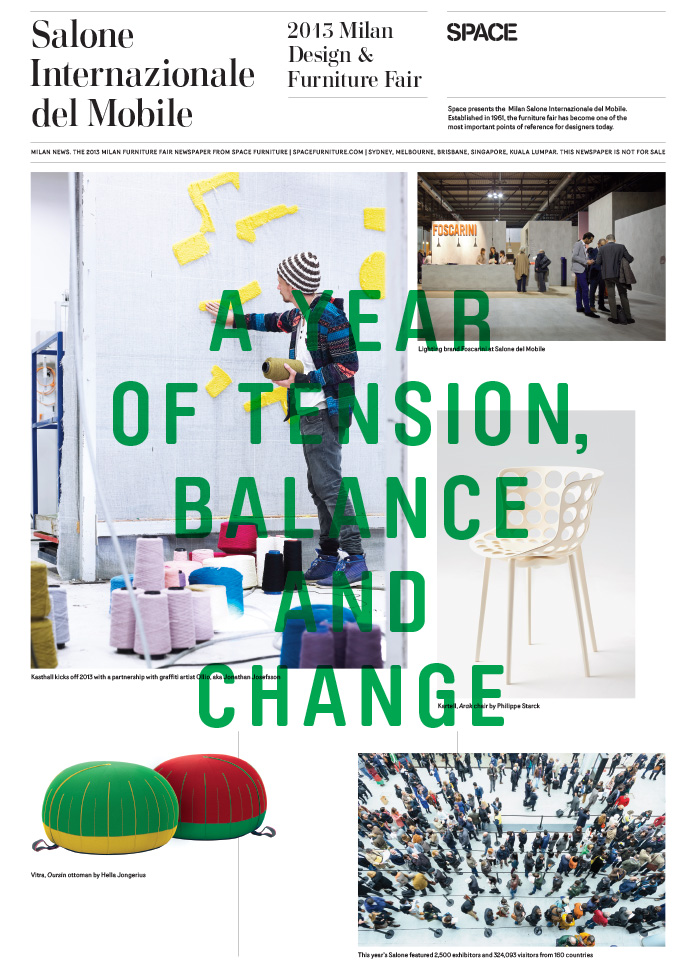
Reports from Milan designed by Studio Ongarato in big broadsheet format, highlighted the essence of the Milan Furniture Fair's annual design offering. Photo c/o Space.
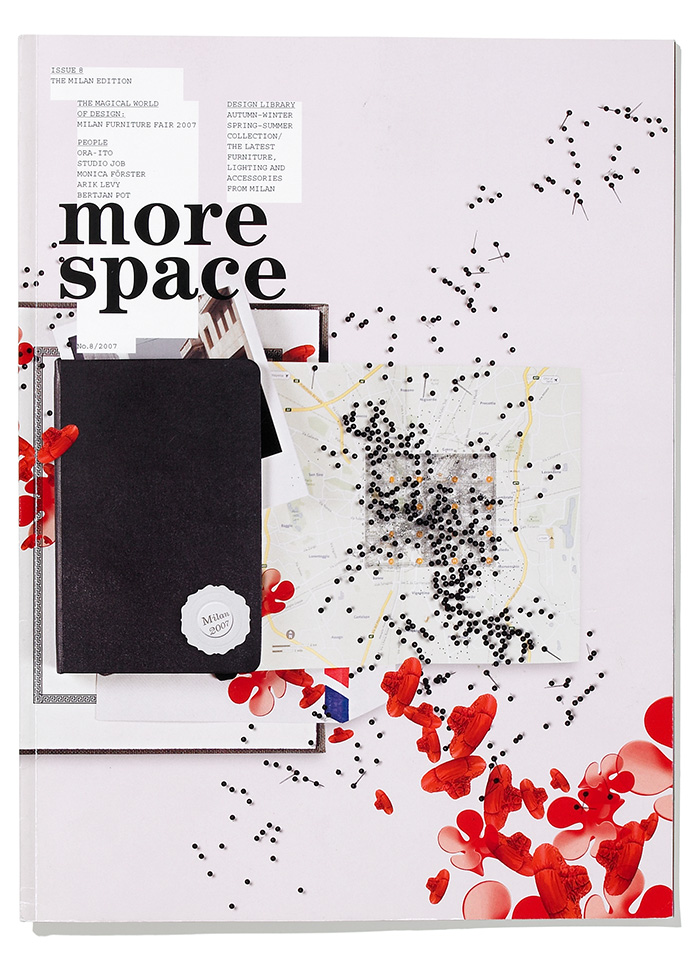
One of our favourite covers is More Space Issue 8, featuring all the news from Milan. Photo c/o Space.
The pages of More Space were brought to life through colourful, crafted layouts defined by the evocative pencil illustrations by Tobias Roettger, photo shoots with designers, clients and collectors, and covers that always embraced a freedom in tune with the expansive ideas deep within design itself. When More Space moved online in 2011, it would evolve with the immersive medium of film, but the covers of More Space would remain a feature on the walls of the Sydney flagship, a reminder of Space’s mission to always push the boundaries of design retailing.
Creating Space is a More Space editorial series that celebrates Space Furniture's 30th birthday.
